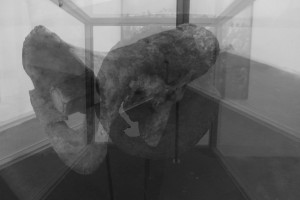Ecoutes Imaginaires (Imaginary Listening)
By Luca Forcucci
Monday, 07/06/2015
Art and science are inextricably connected. Changing views of the manner in which nature operates bring about corresponding changes in art . . .
If I imagine myself then as a composer in a situation where anything can be done, I imagine making a music a little different from the concerts of ambient sounds we nowadays hear wherever we are when we listen. I imagine this music as technically like my experience: wireless. I imagine all distinctions between art and life removed. Art would then have to do with the opening of ourselves to the world in which we live –
From a typed letter from John Cage to Billy Kluver
Ecoutes Imaginaires (Imaginary Listening) is the idea of a possible imaginary aural perception emerging from the past while exploring a landscape, and while (sound) walking. Walking is conceived as an art form from which the aural landscape is revealed. Focussing on natural landscapes, reading urban contexts and urban organisations, surrounding architecture through the ear shall provide an alternative and contrasting experience to sight, leading to a combination of several possible realities:- The one that existed, but not there anymore;
- The one that remains;
- The one imagined;
- The one, which combines existed and imagined realities within one's own imagination.

